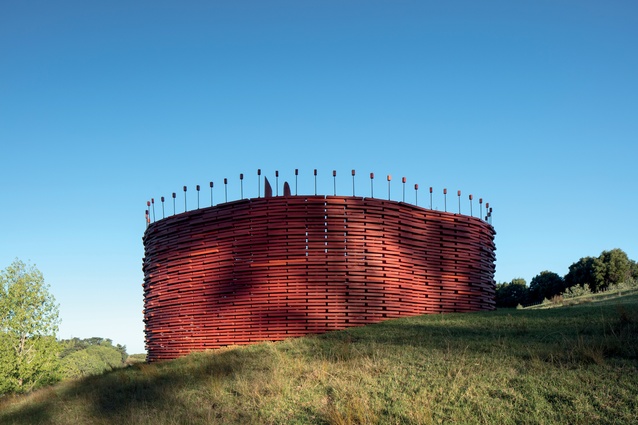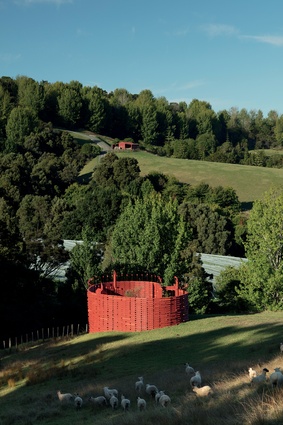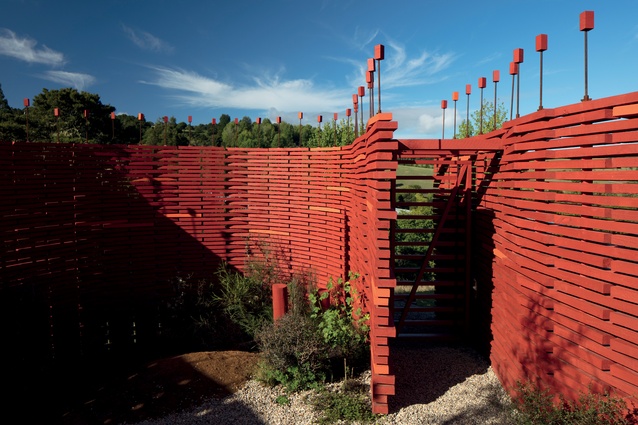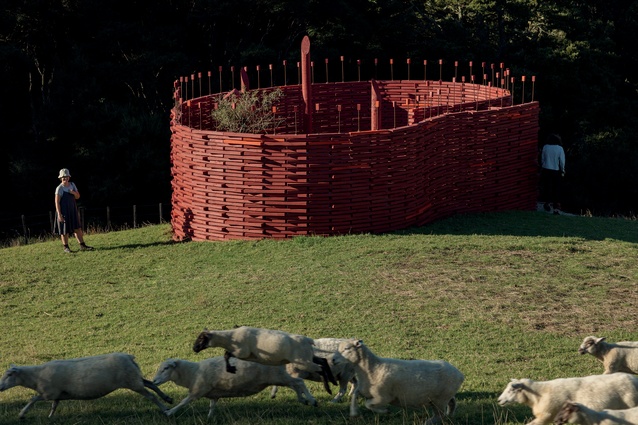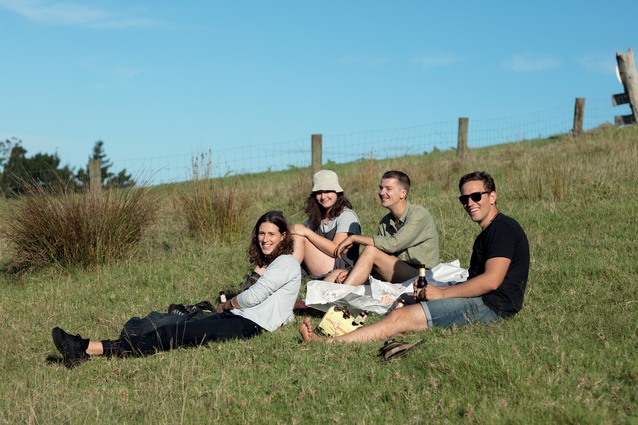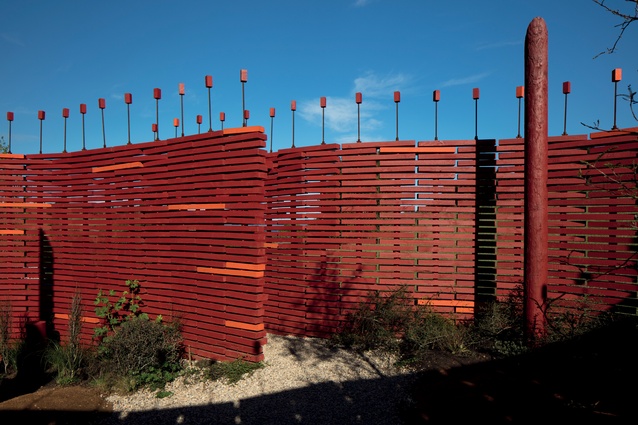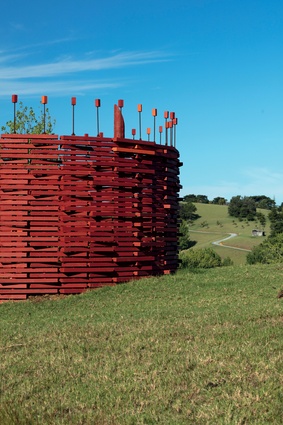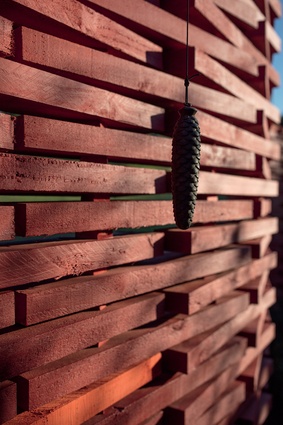Te Takitaki
Te Takitaki is the 2017 winner of the Brick Bay Folly competition. Designed by four architectural graduates, the architectural installation joins last year’s winning folly, Daughter of the Swamp, at the Brick Bay Vineyard.
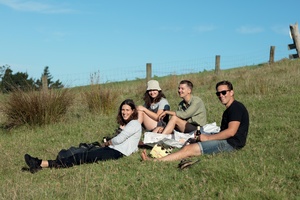
The winning architectural installation in the Brick Bay Folly 2017 competition is being unveiled at the Brick Bay Vineyard at Snells Beach near Warkworth on Sunday 26 March.
The winning entry, Te Takitaki, was designed by architectural graduates Tom Dobinson and George Grieve, from Patterson Associates, and Sophie Edwards and Jayne Kersten, from Jasmax, in collaboration with landscape architect Winston Dewhirst from O2 Landscapes. They had previously studied together at Victoria University of Wellington.
The team’s design is based on the structure of a Māori palisade, a fence that assisted in the fortification of a key piece of land. “We were interested in exploring the experience of being inside the palisade – what is this wall protecting?” asks Dobinson. “What is inside the wall might be unfamilar in comparison with the landscape around it.”
Te Takitaki is the third folly to be sited at Brick Bay Vineyard, following Daughter of the Swamp last year and Belly of the Beast the year before. It is sited on a sloping hillside. The form follows an organic curve, 8m x 10m, and its height ranges from 2.5m, at the lowest point, to 4m at the highest.
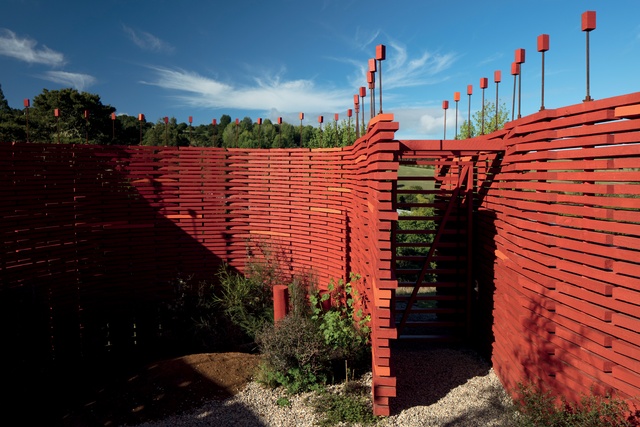
It is constructed from orange-stained, rough-sawn timber, which is threaded through a row of undulating steel rebar in a weaving configuration. The top of the rebar reaches a horizontal datum, capped by blocks. Inside are vertical posts, some low enough to sit on, while others stand tall.
The team found the construction to be an interesting process. “It was an unconventional way to make a wall,” explains Dobinson. “There was some uncertainty about whether the structure would work or not, whether the circular plan would give the folly enough structural integrity, but we received a lot of good advice from colleagues and builders, and it was great how helpful everyone was. We used a big warehouse to set up a production line for cutting and drilling the timber, and that took longer than expected however, the wall went up in two days, which was surprising.”
“Another surprise was the amount that the timber shrank. We had to keep tightening the nuts at the top and, at one point, the folly nearly fell over. But it just needed tensioning until it settled. We are really grateful to Winston, to Nick Edwards, Sophie’s dad, who gave us a huge amount of technical advice and to the friends and family who helped us on-site,” Dobinson says.
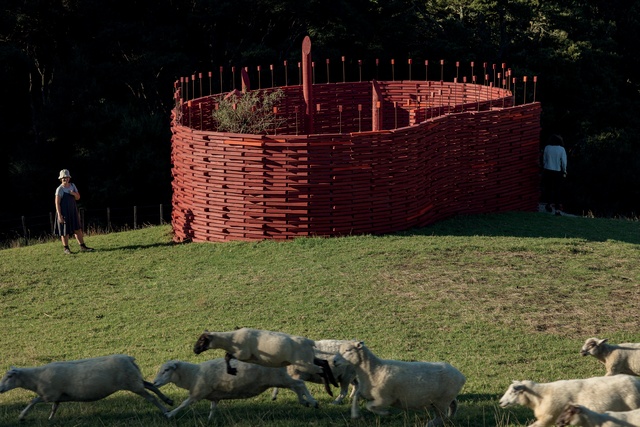
Brick Bay’s Sculpture Trail manager Jonathan Organ says, “The winning team really stepped up and went way above and beyond the judges’ expectations to create this sublimely elegant and sophisticated folly. This project is the culmination of passionate, disciplined creatives and generous sponsors with clarity and vision.”
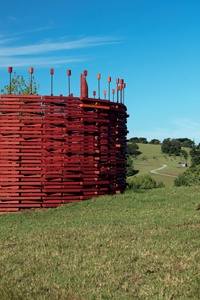
“Big thanks to Resene, Fletcher Building, Brick Bay Sculpture Trust and Architecture New Zealand. We look forward to next year’s entries as the legacy of the past three winning follies will no doubt continue to inspire the next generation of forward-thinking, avant-garde New Zealand architects.”
The winning team received an overall $30,000 grant towards realising the proposed project, including $15,000 from Resene, $10,000 in building supplies and services from Fletcher Building, as well as $5,000-worth of advice, and a non-cash $5,000 labour grant from the Brick Bay Vineyard team.
The jury included Ryan Mahon, the 2016 co-winner, Richard Didsbury and Jonathan Organ from Brick Bay Sculpture Trust, Tony van Raat, Richard Harris from Jasmax, Joanne Duggan from Resene, Dave Hunter from Fletcher Construction and Justine Harvey from Architecture New Zealand.
Te Takitaki will be exhibited at Brick Bay Vineyard for two years.

